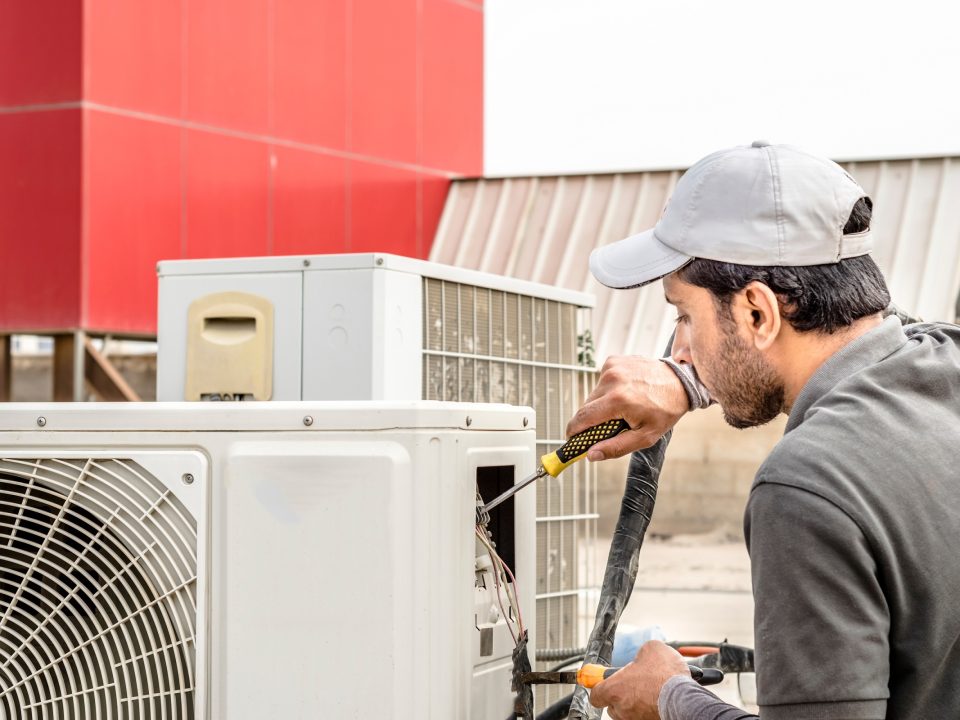
JobKeeper 2.0 – guidance for employers
The JobKeeper scheme has been extended to 28 March 2021.
The next phase of JobKeeper is the JobKeeper extension 2 which will commence from 4 January 2021.
The criteria to receive these payments are similar to the eligibility of JobKeeper extension 1; this means the eligibility will be based on actual turnover change rather than projected turnover which could have been used when businesses applied in the first phase of JobKeeper.
Below is a summary of the guidance that has been released for the JobKeeper extension 2:
In summary:
From 4 January 2021, you must:
- determine your eligibility by verifying that your actual GST turnover for the December 2020 quarter has declined by more than 30% relative to a comparable period (generally the corresponding quarter in 2019)
- complete and submit the decline in turnover form to the Australian Taxation Office (ATO) prior to 31 January 2021
- work out if the tier 1 or tier 2 rate applies to each of your eligible employees
- tier 1: $1,000 (before tax) per fortnight (being reduced from $1,200)
- tier 2: $650 (before tax) per fortnight (being reduced from $750)
- notify the ATO and your employees what payment rate applies to them
- this can be done using the ATO portal or in the businesses relevant accounting software (we have provided some examples below)
- ensure your employees are paid at least $1,000 per fortnight for tier 1 or $650 per fortnight for tier 2 by the relevant fortnight date.
If you do not satisfy the actual decline in turnover test you should notify your eligible employees that they will no longer receive JobKeeper payments.
What doesn’t change:
If you are currently receiving JobKeeper payments and plan to continue receiving them:
- You don’t need to re-enrol for the extension 2
- you don’t need to reassess employee eligibility or ask employees to agree to be nominated by you as their eligible employer, if you are already claiming for them before 4 January 2021
- you don’t need to meet any further requirements if you are claiming for an eligible business participant, other than those that applied from the start of JobKeeper relating to
- holding an ABN, and
- declaring assessable income and supplies.
Rules regarding decline in turnover test
For JobKeeper fortnights from 4 January 2021 you will need to meet an actual decline in turnover test. The actual decline in turnover test is similar to the original decline in turnover test, however:
- it must be done for a specific quarter only, being the December 2020 quarter for JobKeeper extension 2
- you must use actual sales made in the relevant quarter, not projected sales, when working out your GST turnover
- you must allocate sales to the relevant quarter in the same way you would report those sales to a particular business activity statement if you were registered for GST
- i.e. if you are registered on a cash basis, your GST turnover for the test will be on a cash basis.
The actual decline in turnover test is satisfied when your current GST turnover for the quarter ending 31 December 2020 (the months of October, November and December) has declined by the specified shortfall percentage in comparison to your actual GST turnover for the quarter ending 31 December 2019.
Businesses that were not eligible for JobKeeper extension 1 payments (28 September 2020 – 3 January 2021) may still be eligible for the JobKeeper extension 2 payments (4 January 2021 – 28 March 2021). Businesses do not need to have passed the eligibility requirements for extension 1 to be eligible for extension 2.
Business eligibility
To be eligible, businesses must have experienced:
- 50% decline for those with an aggregated turnover of more than $1 billion
- 30% decline for those with an aggregated turnover of $1 billion or less
- 15% decline for Australian Charities and Not-for-profits Commission-registered charities (excluding schools and universities).
This will be based off turnover during the December 2020 quarter (October, November and December), relative to the comparable period in 2019.
Businesses will need to assess their eligibility for JobKeeper extension 2 by 31 January 2021 and notify the ATO using the decline in turnover test form which is available on the ATO portal.
Alternative turnover tests
The Commissioner of Taxation will have discretion to set out alternative tests that would establish eligibility in specific circumstances where it is not appropriate to compare actual turnover in a quarter in 2020 with actual turnover in a quarter in 2019, in line with the Commissioner’s existing discretion.
We have explained each of the alternatives available for JobKeeper extension 1 in our blog here, these tests will remain in place for the JobKeeper extension 2: www.afsbendigo.com.au/alternative-tests-for-jobkeeper-2-0/
If you do not satisfy the actual decline in turnover test
If you do not satisfy the actual decline in turnover tests for either JobKeeper extension 1 or extension 2, you can’t claim JobKeeper payment for fortnights in the relevant extension period.
You should notify your eligible employees, eligible business participant and/or eligible religious practitioner if you are unable to claim JobKeeper payments for them. You should also advise them that you are no longer obligated to pay them an amount that is at least equal to the JobKeeper payment in those fortnights.
Your eligible employees will not be able to be nominated for JobKeeper by any other entity.
FOR EMPLOYEES: Potential part-JobSeeker payment for some on JobKeeper
Anyone concerned about having their income reduced under JobKeeper is encouraged to investigate JobSeeker unemployment benefits.
For those whose income is reduced, they may be entitled to a part-payment on JobSeeker to top up their JobKeeper amount, dependent on asset tests and other issues.
Individuals receiving JobKeeper at the full-time rate of $1,200 or the part-time rate of $650 per fortnight might be able to receive an additional $95 or $645 respectively, in unemployment benefits, raising their incomes to $1,295.
For full details visit: How to get JobKeeper and JobSeeker.
The rates of payment will change
For JobKeeper fortnights from 4 January 2021 the payment rate has been reduced and is split into two rates:
Tier 1 rate, $1,000 per fortnight (before tax) – this rate applies to:
- eligible employees who worked more than 20 hours a week on average in the four weeks of pay periods before either 1 March 2020 or 1 July 2020
- eligible business participants who were actively engaged in the business for 20 hours or more per week on average and provide a declaration to that effect
Tier 2 rate, $650 per fortnight (before tax) – this rate applies to:
- any other eligible employees and eligible business participants.
For more information on the 20 hours a week for four weeks threshold for employees please refer here: www.ato.gov.au/General/JobKeeper-Payment/Payment-rates/80-hour-threshold-for-employees/
Employers will continue to be required to make payments to employees equal to, or greater than, the amount of the JobKeeper Payment (before tax), based on the payment rate that applies to each employee.
The JobKeeper payment will continue to be made by the ATO to employers in arrears. Businesses will be required to nominate which payment rate they are claiming for each of their eligible employees.
Processing JobKeeper in your payroll software
MYOB
- Open the Payroll reporting centre (Payroll command centre > Payroll Reporting > Payroll Reporting Centre).
- Click the JobKeeper payments tab.
- Select each eligible employee and choose their Employee tier.
- Click Notify the ATO.
Xero
- Select ‘Enrolment setting’ on the right hand side where Xero asks “Are employees eligible”.
- Select ‘set tier’ and specify whether the employee is tier 1 or 2.
After all employees are set, the ATO will be notified once the next Single Touch Payroll file is lodged.
Quickbooks
- Select Actions > Add JobKeeper Payment > Assign JobKeeper Tier
- From the dropdown select ‘JOBKEEPER-TIER1’ or ‘JOBKEEPER-TIER2’.
- Select ‘Finished’.
- Remember to click ‘Save’ in the pay run.
Reckon
For JobKeeper 2.0 the ATO has introduced a new payroll item which is included with Single Touch Payroll reports called JK-TIERX where X indicates what tier the employee falls into, and how much the payment should be.
For example, if an employee is a Tier 1 employee, the allowance item will be reported as JK-TIER1. More information about how to set this up can be found here: https://help.reckon.com/article/igzxmmgbru-adding-job-keeper-allowance-pay-items-in-reckon-accounts#jk_tierx
Do I need to include the JK-TIER items on every pay run?
No, once this has been reported for an employee, the tier for the employee has been set and you do not need to include this in every JobKeeper pay run.
You will only need to include the JobKeeper top up allowance for any employees earning under the minimum payment as required by their tier. More information on this can be found here: https://help.reckon.com/article/red06g6gpu#subsequent_pays
Employee eligibility
The eligibility rules for employees have changed. Employees will be eligible if they:
- are currently employed by an eligible employer (including if you were stood down or rehired)
- were employed full-time, part-time or fixed-term, or a long-term casual employee (employed on a regular and systematic basis for at least 12 months) as at 1 July 2020 and not a permanent employee of any other employer.
- were aged 18 years or older at 1 July 2020 (if 16 or 17 you can also qualify if you are independent or not undertaking full time study).
- were an Australian resident or an Australian resident for the purpose of the Income Tax Assessment Act 1936 and the holder of a Subclass 444 (Special Category) visa as at 1 March 2020.
- were not in receipt of government parental leave or Dad and partner pay or a payment in accordance with Australian worker compensation during the JobKeeper fortnight.
The self‐employed will be eligible to receive the JobKeeper Payment where they meet the relevant turnover test, and are not a permanent employee of another employer.
Please note: with the relevant date of employment moving from 1 March to 1 July 2020, we encourage you to review the status of any employees employed between 1 March and 1 July to see if they are now eligible for JobKeeper under both the existing scheme and the extension.
Dates JobKeeper payments need to be made to employees
Once the appropriate rate is determined, you will need to ensure that you pay all eligible employees the minimum payments by the fortnightly dates set out by the ATO.
The payments to employees for the first two fortnights of JobKeeper extension 2 (4 January 2021 – 17 January 2021 and 18 January 2021 – 31 January 2021) need to made by 31 January 2021.
A complete list of the JobKeeper fortnights and payment due dates can be found here: https://www.ato.gov.au/General/JobKeeper-Payment/JobKeeper-key-dates/
New to JobKeeper?
The JobKeeper scheme will remain open to new participants, provided they meet the eligibility requirements for the relevant period. New JobKeeper participants will be required to complete employee nomination forms.
If you have any questions about JobKeeper payments and your business, client or not, please give us a call on 03 5443 0344.



